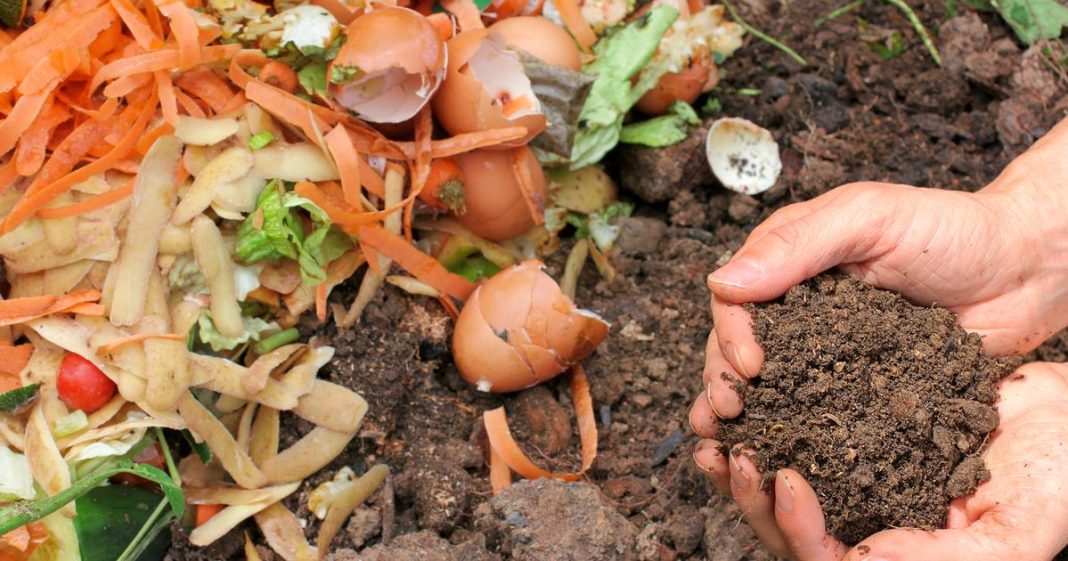Fed up of chucking away vegetable peel that just sits and rots in your bin? If you’ve got a garden – or balcony, or any outside space – you could reuse them to improve the quality of your soil.
Instead of binning the peelings from this weekend’s roast carrots, gardeners are being advised to use them in the garden where they can enrich the soil as they break down. Sherwin Anthony, an urban gardener at Gardenislife.com, says that carrot peels are full of potassium, which is one of the essential nutrients needed by plants to help them produce more fruits and flowers.
Potassium also helps plants reach maturity by improving their absorption of water and nutrients from the soil they’re planted in. So rather than buying expensive fertilisers for your outside space, turn to the humble carrot for a money-saving alternative. There are, however, some pointers to remember before you start chucking vegetable peelings into your garden willy-nilly, says Sherwin.
Firstly, you can just pop them into your compost bin and let nature take its course. You can also bury your peels into the soil around your plants too, but the larger the peelings are, the longer they will take to break down – meaning it could take months for them to start leeching potassium into the soil.
And depending whereabouts your plants are in their growing cycle, digging into the soil may damage their roots, destroying your hard work. If your plants are fairly well established, you could just scatter the carrot peels on top of the soil, which helps them decompose faster because they’re exposed to more oxygen.
Or you could speed up the process by chopping the peels into smaller pieces to give the microorganisms in the soil an easier task to break them down. But, warns Sherwin, doing this may do more harm to your garden. “When scattering vegetable or fruit material on the soil, you attract snails and slugs,” he points out.
“They love to feast on these tasty fertilisers. Snails and slugs are also good at eating the soft leaves and stems of your plants. A few hours of snails eating your plants could kill them. Be sure that when you scatter carrot peels on the soil, there are no snails and slugs in the area. They are active during the night so you might not have a chance to catch them.”
To reduce the risk of slimy critters getting their jaws on your vulnerable plants, you could even consider making your garden a ‘smoothie’ – using a food processor or blender to turn the carrot peels into pulp, adding a little water to refine the texture, then pour the mixture into or on top of the soil.
Sherwin recommends going one step further: making your plants a cup of tea. Technically known as an infusion, steeping your carrot peelings in water for 24 hours and then pouring the ‘tea’ onto your soil is a great way to get maximum potassium into the ground so it can provide the best nutrients for your garden.
To make your carrot tea fertiliser, Sherwin recommends washing the carrot thoroughly before peeling it to get rid of dirt that may contain harmful microorganisms. You can include the whole vegetable here – one carrot produces a litre of liquid fertiliser.
Chop or blend the carrot and peelings and put them into a plastic container with a lid. Pour a litre of water on top – regular tap water will work fine – and seal the container to make sure insects can’t get in to lay their eggs in the liquid.
Store the container in a cool, dry place away from direct sunlight and let it sit for 24 hours. Once the peelings have infused the water, you can strain the liquid through a sieve and pour the ‘tea’ directly onto your plants – it works especially well on leafy vegetables and flowering or fruiting plants, says Sherwin.
Chuck the remaining solids onto your compost heap to break down, or throw them on top of soil – just be careful of those pesky slugs and snails. “Plants will grow healthier by watering them with carrot tea instead of just plain water,” adds Sherwin.
Have you used carrot peels in your garden? Let us know how it worked out in the comments below.
At Reach and across our entities we and our partners use information collected through cookies and other identifiers from your device to improve experience on our site, analyse how it is used and to show personalised advertising. You can opt out of the sale or sharing of your data, at any time clicking the “Do Not Sell or Share my Data” button at the bottom of the webpage. Please note that your preferences are browser specific. Use of our website and any of our services represents your acceptance of the use of cookies and consent to the practices described in our Privacy Notice and Cookie Notice.

